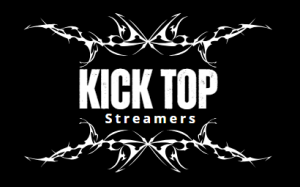Twitch has become one of the most popular platforms for live streaming, especially among gamers, creatives, and influencers. As streamers create hours of valuable content daily, one major concern that often arises is how to Store Twitch content effortlessly for future use. Whether it’s for content repurposing, archival, or sharing across other platforms like YouTube or TikTok, finding a smooth and reliable method is crucial.
Twitch itself offers limited options for saving content. For regular streamers, Twitch saves past broadcasts (VODs) for up to 14 days, while Twitch Partners and Prime members get up to 60 days of storage. After that, the content is gone unless you’ve saved it manually. This is why many creators seek third-party solutions or systems to store Twitch content effortlessly. By doing so, they ensure their hard work remains accessible and can be reused across multiple platforms, maximizing their reach and impact.
To store Twitch content effortlessly, one effective method is to enable the automatic archiving feature within Twitch’s settings. This basic feature ensures that each stream is saved as a VOD temporarily, allowing time for download or export. From there, streamers can download the videos to local storage or export them directly to YouTube. However, for creators who stream regularly or in long durations, manual downloading can become cumbersome and inefficient. Thus, the need arises for more automated, cloud-based, or software-driven storage solutions.
Using dedicated software or cloud services can dramatically simplify the process and help store Twitch content effortlessly. Services like OBS Studio, Streamlabs, or third-party tools like Restream and OneDrive integrations can be configured to record and store streams directly. Some services even offer automatic uploads to cloud storage, giving streamers peace of mind. These tools often provide better quality than Twitch’s own VODs, along with more flexibility for editing and republishing content later on.
Another strategic advantage of choosing to store Twitch content effortlessly is content preservation. Twitch streams often contain high-value interactions—such as live Q&A sessions, gaming highlights, or creative tutorials—that can be repackaged into multiple formats. By archiving your streams, you can later extract clips, highlights, or even full episodes to publish as part of your long-term content strategy. It also ensures that content isn’t lost due to platform policy changes or accidental deletion.
For streamers building a personal brand, long-term storage can also become a crucial part of their digital asset management. Think of your Twitch content as part of your portfolio. Just like artists and photographers keep records of their work, streamers should keep an organized archive of their best performances, most engaging moments, or even behind-the-scenes content. Not only does this support brand consistency, but it also provides opportunities for monetization through other channels, such as creating a course, publishing on-demand content, or building a video membership site.
The technical side of saving content doesn’t have to be complex either. Most streaming software comes with a local recording option. If you have enough hard drive space or an external SSD, simply toggling this feature on will allow you to capture each stream in real-time as it’s broadcasted. Combine this with cloud backup services like Google Drive, Dropbox, or Amazon S3, and you have a scalable solution to store Twitch content effortlessly and securely.
Of course, data organization matters. Once content is saved, sorting it by date, topic, game title, or audience engagement metrics helps make it more accessible in the future. Some streamers even go a step further and log timestamps or highlights during the stream using note-taking apps. This makes it easier to pull snippets for promotional content, thumbnails, or social media posts later on without having to rewatch hours of footage.
Security is another concern when managing digital content. When choosing where and how to store Twitch content effortlessly, look for platforms or services that offer secure encryption, access controls, and regular backups. This is especially important for creators who may eventually monetize their past content or need to protect their intellectual property. Cloud platforms with end-to-end encryption and two-factor authentication can offer a safe balance of accessibility and protection.
Finally, the goal should always be to streamline your workflow. A good storage strategy doesn’t just protect your content—it enhances productivity. With the right setup, you can automate storage, back up files instantly, tag and organize them, and keep your content easily searchable. This enables you to focus more on what you love—creating engaging content and growing your community—rather than worrying about losing your work.
In conclusion, learning how to store Twitch content effortlessly is not just a technical requirement but a strategic investment in your streaming career. Whether you’re just starting or already have a loyal following, having a system to preserve and manage your content will help you stay consistent, professional, and ready for new opportunities. As content becomes a valuable asset in the digital age, streamers who prioritize storage will be better positioned to succeed, grow, and thrive.
